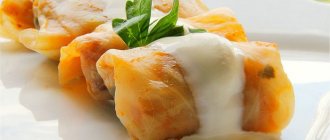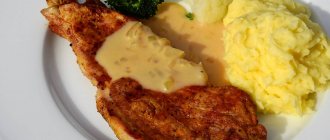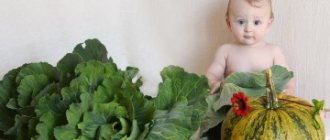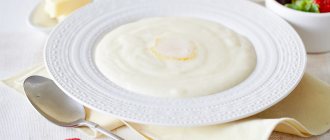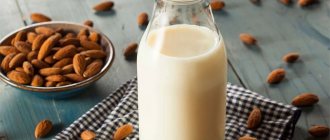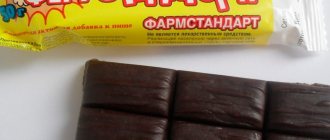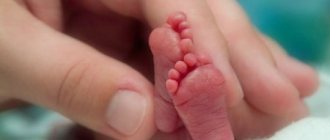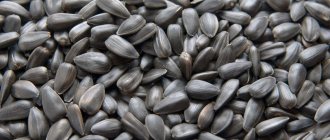Nuts contain vitamins, protein and healthy fats. Despite their benefits, they are strong allergens. This is a heavy product, the assimilation and digestion of which causes problems, especially for infants who have not yet fully developed their digestion. Therefore, nuts should be introduced carefully during breastfeeding and consumed in limited quantities.
However, nuts during breastfeeding have a positive effect on lactation and benefit the health of the baby and mother. Therefore, you should not completely exclude this product from your diet. To avoid problems, you need to know which varieties and when can be introduced into the menu of a nursing mother.
Benefit or harm?
The product contains a large amount of vitamins A, B and E. It strengthens the body, gives vigor and strength. Nuts during breastfeeding contribute to the normal growth and development of the baby and help the mother recover after childbirth. In addition, they ensure the normal functioning of nerve cells and internal organs, stimulate brain function and improve memory.
The vitamin C content in this product is superior to citrus fruits and black currants! This vitamin forms and strengthens the immune system, resists infections and colds, and improves mood.
However, nuts are included in the list of foods containing high-risk allergens. You can find out more about what causes allergies in babies here. But not every variety causes an allergic reaction. First of all, hazelnuts and peanuts are among the dangerous allergens. But walnuts and cashews carry less risk for infants.
Do they enhance lactation?
There are two misconceptions about the connection between lactation and nuts.
First: supposedly nut kernels promote milk production. But no nuts, including walnuts, and no foods in general enhance lactation. Milk comes thanks to prolactin, its amount depends on the frequency of the baby's feedings. And not at all from food. To increase lactation, you just need to feed the baby more often.
Second: nuts during breastfeeding allegedly cause lactostasis and even mastitis. But since they do not affect lactation, they cannot cause problems with excess milk.
What varieties can
Pine nuts during breastfeeding are the safest for babies, as they cause allergies less often than other varieties. This product is easily digestible and has high nutritional value. Pine nuts protect the body from viruses and promote rapid healing of the skin and mucous membrane.
Walnuts are the second safest nut for babies. This product increases the fat content of breast milk and has a positive effect on lactation. It improves heart function and strengthens the immune system, relieves fatigue and prevents depression, removes toxins and cleanses the body. Walnuts during breastfeeding will help babies gain weight and relieve diarrhea.
A nursing mother can eat almonds and cashews with caution. These products relieve fatigue well and remove harmful substances from the body, normalize appetite, and help premature babies and small infants. However, if such food is abused, the baby experiences severe colic and bloating. Nuts can also cause various allergic reactions. For example, a rash or redness of the skin.
Hazelnuts and peanuts are the strongest allergens that can cause an anaphylactic reaction! In addition, pathological fungi can often be found in peanuts, which cause severe intoxication. Therefore, doctors do not recommend that nursing mothers eat peanuts and hazelnuts.
When breastfeeding, it is not recommended to eat Brazilian varieties and other exotic species. By the way, coconut is also a nut that can be consumed by a nursing mother in limited quantities. Coconut contains a large amount of protein and fiber, vitamins A and E.
Can a nursing mother eat nuts?
Breast milk is a precious product for babies. It is full of everything necessary for healthy growth and good health. But the quality of milk greatly depends on the mother’s diet. If she decides to eat an orange, then it is not at all surprising that the baby may develop a rash, since citrus products are a powerful allergen.
Nuts are very nutritious, they contain important vitamins and minerals, they are used not only in food, but also in the manufacture of dietary supplements.
They are very fatty and are considered a high-calorie product. On the one hand, this is good, because unsaturated fatty acids are necessary to maintain the correct hormonal balance of a woman. During breastfeeding, they penetrate into the milk and make it more nutritious and healthier. On the other hand, they interfere with weight loss if you eat a lot of them.
At the same time, it is a very allergenic product. Nuts during breastfeeding can cause a strong reaction in the baby: rash, colic, change in stool. Much depends on your predisposition to developing allergies and the type of nuts. So, what nuts can breastfeeding women eat?
Can I eat walnuts while breastfeeding?
“Greeks” contain a large amount of life-giving micro- and macroelements, ascorbic acid, and healthy fats. All this wealth is transferred into breast milk, and from it to the baby, which promotes healthy growth and development.
It is not recommended to eat roasted walnuts, as most of their beneficial properties are lost during frying. Fried delicacy can lead to infant colic. The same effect can be caused by nut jam or paste.
Be careful, as this is a fairly fatty product. Overeating negatively affects both the woman’s body and the baby’s digestive process. Therefore, you should adhere to a certain dosage (about 3-6 nucleoli per day).
Nuts go well as a filling snack between breakfast and lunch.
Benefits of walnuts for women during lactation:
- Calorie content (more than 660 kcal per 100 grams), which means they give strength. However, if you are struggling with excess weight, this is more of a disadvantage for you;
- Healthy polyunsaturated fats help normalize female hormonal levels;
- Calms, promotes good sleep for both mother and child;
- Lots of ascorbic acid (helps maintain the immune system during the postpartum recovery period).
- Walnut oil normalizes intestinal function and prevents constipation.
But alas, adults and children are often allergic to walnuts. This product is one of the most dangerous; it is included in the standard “black” list of allergists along with chocolate and chips.
If a nursing mother is naturally allergic or suffers from asthma, then you will have to wait a while with this product. If dad suffers from allergies, it means that the baby may also have a predisposition to it. Mothers of such allergic children need a strict diet during breastfeeding. You can experiment with walnuts, but only after 6 months and a little at a time.
If there is no allergy, and the child is already 3 months old, you can try walnuts. For the first time, half a kernel is enough, after two days you can eat the whole nut. If nothing has changed in the child's condition or behavior, eat more next time.
Can I eat pine nuts while breastfeeding?
GW pine nuts are a healthy and relatively harmless delicacy. They are much less allergenic than other types of nuts. And in terms of their benefits they are in no way inferior to them.
Pine nuts help a woman stay young and beautiful. The main components of the nucleoli are valuable fatty acids and protein. Nuts boost immunity, prevent cancer and have many other healing properties.
They can be consumed in their usual form, fried, or added to salads and homemade pastries.
Still, nursing mothers should use pine nuts with caution, as they can still cause allergies. That is why pediatricians recommend starting the introduction of pine nuts during lactation only after 3 months.
Start with a dose of a teaspoon, and gradually (if the baby does not have a reaction) increase the portion to 100 grams of nuts per day.
Is it possible for a nursing mother to have cashews and other varieties?
Almonds and cashews can be eaten by a nursing mother. Compared to walnuts and pine nuts, they contain fewer nutrients. They are contraindicated for allergy sufferers. If this is not about you, then from 3 months you can eat them a little. Nothing bad will happen from 3-4 pieces a day.
Not recommended for breastfeeding:
- Brazilian nut;
- Peanut;
- Hazelnut.
Compared to cashews and almonds, peanuts, hazelnuts and Brazil nuts are much more allergenic. They can cause diathesis, urticaria and other forms of allergies in babies on breastfeeding. Peanuts, strictly speaking, are not of the nut family at all, they are from the legume family. It has few valuable nutritional properties, but for allergy sufferers it is more dangerous than chocolate.
Rules for eating nuts during lactation
- You can eat nuts while breastfeeding no earlier than three months after the baby is born;
- Start with one fetus and carefully observe the baby's reaction. If there are no negative manifestations, nuts can be introduced into the diet;
- Don't try several new types at the same time! It is important to know which variety has what reaction;
- Nuts are not recommended for those with a high risk of allergies. For example, when mom or dad also has an allergic reaction, because the disease is often inherited. In this case, the baby may be allergic to a completely different object than the parents;
- A mother with inflammation or gallstones should not eat nuts;
- If a negative reaction occurs, immediately eliminate nuts from your diet;
- The daily intake of nuts for nursing is 20-30 grams;
- Nuts should be consumed fresh or dried. Fried foods are difficult to digest and can be harmful to the baby and mother;
- Hazelnuts and peanuts should not be consumed while breastfeeding.
How to properly introduce nuts into the diet while breastfeeding?
- Mommy can start eating nuts only after the baby is 3 months old.
- Eat only one type of nut and carefully monitor the child’s body’s reaction for about 2 days.
- You can start using no more than half a nut. And only gradually increase the dose. But you should not exceed more than 100 g per day. And don’t forget about the accumulated allergen, so you shouldn’t feast on them every day. Moreover, regaining a slim figure is much more difficult than taking care of it right away.
Strict taboo on peanuts and hazelnuts
- Mothers who have inflammation in the urinary or gall bladder should not eat nuts.
- It's better to eat fresh nuts. Fried products are less easily absorbed by children's bodies.
- Avoid peanuts and hazelnuts completely during lactation!
As you can see, nuts have a lot of benefits not only for the nursing mother, but also for the child. But when breastfeeding, you should be very careful with their use. After all, do not forget that nuts, along with honey, are the strongest allergen.
Recipes with nuts to improve lactation
If the baby does not have allergies, nuts can be added to various dishes. These are baked goods and salads, meat and main courses, porridges. Since nuts have a positive effect on lactation, there are many recipes specifically for nursing mothers using this product.
To increase the fat content and nutritional value of breast milk, a special drink is prepared. Walnuts are crushed and added to 100 ml of boiled milk. The mixture is left in a thermos for two hours and drunk throughout the day. However, this infusion can only be drunk when the baby is not allergic to cow protein. This mixture improves the quality of breast milk and helps with constipation in infants.
A mixture of nuts and carrots will increase milk production and help with lactic crisis. Medium carrots are grated, walnuts are chopped and the ingredients are mixed. Take half a teaspoon three times a day after meals. You can store the mixture in the refrigerator only in airtight containers!
To enhance lactation, you can take 100 grams of raisins, dried apricots and figs, and a glass of walnuts. Pass the ingredients through a meat grinder and mix with 100 grams of butter. If the baby is not allergic, you can take honey. Dried fruits have a positive effect on milk production and are more beneficial than fresh fruits.
How else to increase the fat content of breast milk, read the link https://vskormi.ru/breast-feeding/milk/kak-povysit-zhirnost-grudnogo-moloka/. And what to do if there is a lack of breast milk, read the article “How to increase lactation.”
What are the benefits of nuts?
The nut has a very rich vitamin composition, so it is very useful not only for the mother, but also for the child. The kernels of this plant are used in folk medicine for the preparation of immunostimulating and immunostrengthening agents. Various tinctures, ointments, masks and creams are prepared from them. Why is a nut so useful? Is it possible to continue breastfeeding while consuming the fruits of this plant?
The vitamin composition of nuts is as follows:
- vitamin C, and there is more of it in nut kernels than in currants and lemon: it improves immunity and activates the body's resistance to disease. It is worth considering that unripe fruits contain more vitamin C than ripe ones;
- more than 20 different amino acids, including arginine, which helps strengthen arterial vessels and maintain their elasticity;
- polyunsaturated fats, which help reduce bad cholesterol levels;
- juglone is an antibacterial compound that protects against viral and colds;
- tannins, which have regenerating properties, have a beneficial effect on the gastrointestinal tract and circulatory system;
- a set of microelements, namely iodine, phosphorus, magnesium, zinc, potassium, selenium, copper;
- vitamins A, PP and E, as well as B vitamins;
- iron in large quantities, which is well absorbed by the child’s body, even if he is an infant;
- essential oil;
- carotenoids.
Walnut is a fairly fatty product. However, it contains virtually no carbohydrates. Breastfeeding should not be an obstacle for a nursing woman to consume nuts, since these fruits perfectly saturate breast milk with substances of protein origin, amino acids and other beneficial components, which have a beneficial effect on the growth and development of the child.
Regular consumption of nuts by a mother who has an infant leaves a positive imprint on the health of the woman and baby, namely:
- Calms the baby's nervous system and improves sleep.
- Improves the functioning of the heart and circulatory system as a whole.
- Restores immunity and strengthens it.
- Help the body cope with negative manifestations in the external environment (for example, radiation, toxins).
- They have a diuretic effect, so they are useful for swelling.
- Helps remove toxins and waste.
- Helps enrich the body with oxygen, preventing anemia.
- They are an excellent prevention of fatigue and depression.
- Stimulates brain function and improves memory.
- Prevents the development of mastopathy.
How to increase milk supply while breastfeeding?
- read here. Is it possible to eat cucumbers while breastfeeding: the benefits and harms of the product.
Can a nursing mother have watermelon and melon: a healthy diet, read here.
As you can see, the nut is really useful for women who breastfeed a child, and for the baby himself, if he is breastfeeding. This fact is confirmed by the famous pediatrician Evgeny Komarovsky.
How to select and store
During lactation, walnuts can be eaten in the form of a whole kernel, oil, or crushed.
When purchasing nuts, pay attention to appearance. This rule applies to both shells and shelled walnuts. Dark spots, rottenness, yellow coating are signs of a low-quality product.
Walnut oil is sold in darkened containers, has the color of amber honey and a pronounced “walnut” aroma.
Unshelled nuts are stored in a cool place with adequate ventilation; store peeled kernels in the refrigerator in a paper or canvas bag. Store the oil in a tightly sealed glass container in the refrigerator.
The benefits and harms of pine nuts
In Russia, pine nuts are traditionally called the fruits of the Siberian pine pine. The weight of one nut ranges from 0.23–0.25 g, and its size does not exceed 9 millimeters; however, despite such a small weight and size, pine nuts contain a huge amount of microelements and nutrients. In addition, fresh pine nuts are very tasty, and it is often difficult to resist eating more of them than you need, because these nuts, like any other, are very high in calories. The energy value per 100 g of dried nuts is 674 kilocalories or 2,816 kilojoules.
Table: nutritional value and content of nutrients per 100 g
| Energy value | 674 kcal 2816 kJ |
| Water | 2.3 g |
| Squirrels | 13.7 g |
Fats:
| 68.4 g 4.9 g 18.7 g 34.1 g |
Carbohydrates:
| 13.1 g 1.4 g 3.6 g |
| 1 mcg 0.4 mg 0.2 mg 4.4 mg 0.3 mg 0.1 mg 34 mg 0.8 mg 9.3 mg 53.9 mcg |
| 16 mg 5.5 mg 251 mg 575 mg 597 mg 6.4 mg |
Although the fruits of the cedar pine pose a threat to the female figure, they contain a lot of substances useful for the human body. For example, just 100 grams of such nuts can cover 15% of a person’s daily protein requirement, and the protein of pine nuts itself is characterized by an increased content of deficient amino acids, which include lysine, methionine and tryptophan. Man has learned to use not only the nut kernels themselves, but also the cake that remains after pressing the oil from the nut kernels, and even the shells from pine nuts. The cake is used in cooking to enrich food with vitamins and microelements, and balms and tinctures on nut shells are widely used in cosmetology and folk medicine.
Photo gallery: application in cosmetology, traditional medicine, cooking
Pine nut shells are widely used in folk medicine to make decoctions, infusions and balms that promote healing from various diseases.
Pine nut cake is obtained by pressing pine nut oil and is used as a valuable food additive in cooking.
Cedar oil is now actively used in folk medicine, in the production of cosmetics, as well as in cooking.
Pine nuts can also bring great benefits to the female body. They have the following effects:
- have a beneficial effect on the general condition;
- prevent the development of varicose veins;
- strengthen hair and nails, improve skin condition;
- solve dermatological problems (psoriasis, acne, boils, etc.);
- help cleanse the liver and normalize the functioning of the gallbladder;
- contribute to the normalization of sleep and general well-being during painful menstruation;
- facilitate menopause;
- contribute to an easy pregnancy;
- have a positive effect on the quality of milk in nursing mothers.
Video: about the benefits of pine nuts
However, it must be remembered that only eating fresh nuts is beneficial. You should not eat kernels that are rancid or affected by fungus, as this can cause taste disturbances for a period of several days to several weeks. In addition, excessive consumption of nuts on a daily basis can cause allergic reactions and difficulties in the gastrointestinal tract (GIT) in both the nursing mother and the baby. The recommended intake of pine nuts per day for a healthy adult is from 20 to 40 g. We will discuss the intake of pine nuts during breastfeeding below.
Video: pine nuts - positive properties and contraindications
Contraindications for use
And yet, doctors warn that this product is not as harmless as it might seem. Walnut kernels contain essential oils that can cause an allergic reaction in infants. There are not many of them there, only 0.03%, but this is quite enough to not recommend the use of nuts to young mothers who:
- sensitive to food allergens;
- suffer from asthma;
- have hypersensitivity to any type of allergens.
This does not mean that the mother needs to give up nuts altogether; she should just wait and not include them in her diet while you are breastfeeding.
In addition, as we have already mentioned, you need to take walnuts during lactation in small quantities. If you eat too much of this product per day, the allergen will enter the infant’s body along with the milk and begin to accumulate there. As a result, a negative reaction may not occur immediately, but may be delayed for several weeks, but sooner or later the allergen will manifest itself. As a result, you will sin on some other product without identifying the true culprit.
Let us also add that nuts can aggravate skin diseases such as psoriasis or eczema. If a nursing mother has such problems, then it is better for her to give up nuts.
Nursing mothers who are prone to allergies are not recommended to eat walnuts.
